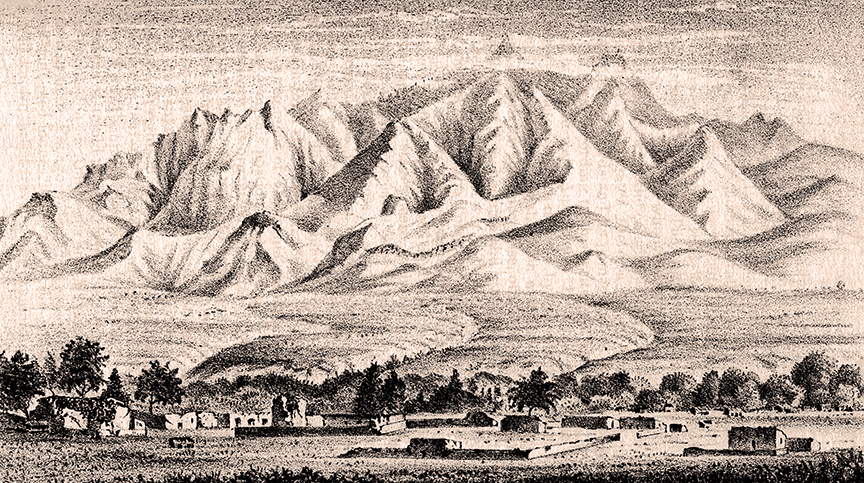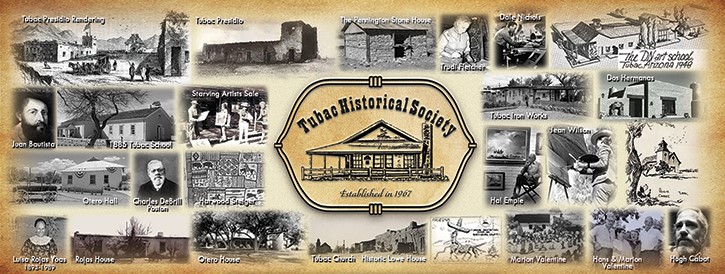About Tubac

“Tubac & the Santa Rita Mountains from the S.E. side”, Charles Schuchard, 1857
Tubac History
What does the name “Tubac” mean? One interpretation is that it means “place of dark water” in the O’odham language, possibly referring to the fact that just north of Tubac, the Santa Cruz River goes under ground. As for the correct pronunciation, in Spanish it is “too-bahk” with emphasis on the last syllable. For those who prefer an Anglicized pronunciation, it is “too-back” with the first syllable stressed.
Tubac started as a prehistoric Hohokam village and later became an O’odham village and farming area. It was a Spanish military post and pueblo and remained an active fort and settlement under Mexican rule. After becoming part of the United States in 1854, it was a mining boom town.
During the Civil War Tubac served as military camp, an important outpost protecting the delivery of goods brought north to supply Union troops on the frontier from the port of Guaymas, Mexico. Tubac was considered so important the Federal Army sent three troops of cavalry to defend Tubac and the Santa Cruz Valley.
Although abandoned and repopulated several times, Tubac regrouped as a small agricultural and ranching community during the Territorial Period. In the mid-1940s, Tubac began to grow as an art community, and today is an attractive retirement town.
All Roads Lead to Tubac
Long before Tucson and Phoenix became prominent, Tubac was a significant destination and an important way-station. Four historic roads converged in Tubac. The intersection of these roads still exists. A visitor can drive on one of the oldest still-traveled roads in America, our Calle de Iglesias in Old Town Tubac.
One of the roads through Tubac was that taken by Spanish missionaries like Padre Kino travelling north from Magdalena, Sonora, Mexico in the 1690s.
The second is the road north from Tubac to Tucson and beyond. After Kino, other missionaries followed this road establishing missions and “visitas” along the Santa Cruz River as far north as Tucson. In 1775 Tubac was the launching site for the Anza Expedition. On this road to the north, Juan Bautista de Anza and a group of nearly 250 people began their journey to establish the town of San Francisco, California.
The third is the road east from the Sonoita Valley and Texas. And the fourth is the road west through Arrivaca to the Altar Valley. These roads were important during the great westward expansion of this country.
